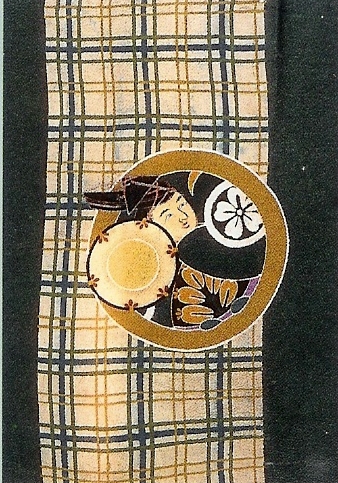| vintage
kimono 1 |
| 昔きものを知り、昔きものを遊ぶ |
|
明治時代に封建体制が終わりを迎えると、 文明開化の波が押し寄せ、日本には数多くの新技術がもたらされました。
近代産業、特に繊維産業の振興は、諸外国と拮抗するために明治政府にとって重要な課題であり、 京都を中心とする繊維業界は、早急に先進技術の導入、習得に努めることとなります。
化学染料を使用した鮮やかな色彩、日本画家の下絵による写実的な描写、型友禅の立体的な表現、明治末期から大正にかけてのアール・ヌーヴォーやアール・デコ文様など、
織技術の高度化とともに、染めの技術にも大幅な変化が生まれました。
色、デザインともに控え目な幕末・明治から、開放のきざしを見せつつも重さを引きずっていた大正時代を終え、 昭和初期になると、着物は一気に華やかになります。
この時代ならではの面白みを極めた、織りと染めの着物には、現代のものにはないエネルギーが満ちています。
|

 |
When the feudal period in
Japan ended, there came a wave of westernization and, along
with it, a flood of new technologies.
The government actively promoted the competitiveness of the
textile industry to contend with overseas products.
Under the Meiji government, and the fabric industry, based
in Kyoto, experienced a revolutionary change.
Suddenly, they were able to create realistic depictions with
vivid colors using chemical dyes, realistic depictions of
Japanese paintings, and three-dimensional expressions of kata-yuzen.
Later, with the influence of art nouveau and art deco in late
Meiji period to Taisho period, the technology of weaving became
more complex, as had dyeing.
During the Meiji period, kimono colours were austerely elegant...then
they greeted a slow change with cultural opening of the Taisho
period.
Finally, in the early stages of Showa, the kimonos became
extravagant.
Kimonos from this period, the textile and the dyeing, bring
an energy which is not seen today.
|
|
|
|
What is the attraction of
"Vintage Kimono"?
Basically, the attraction of Kimono derives from its textile,
design and technique.
For the textile, basic choices are raw silk, wool and cotton,
which are all unique and attractive.
Then technique and designs that perfectly match its textile
are carefully chosen from various selections such as weave,
dye, embroidery, gold leaf, lacquer.
The combination of these factors makes each Kimono one and
only. Those designs and techniques reflect the trend and taste
in each period.
Although contemporary Kimonos are brand new and beautiful,
vintage Kimonos have something contemporary Kimonos never
posses.
They are holding the history of each period. For example,
some Kimonos from Taisho Period, 1912-1926, carry some unique
atmosphere due to their bold designs, vivid colors and elegant
long sleeves.
Similarly, Obis from Meiji Period, 1868-1912 have a unique
characteristic of golden woven patterns.
Just by browsing our collections, you will notice that Kimono
styles are different from each period.
ATTENTION:
Vintage Kimonos, due to their nature, sometimes have blots
or stains with age. Some of our modern Kimono are in mint
condition, but this is not always the case. Silk is a delicate
material that ages more than some other materials, even in
ideal conditions. White silks often become yellowed with time.
If a Kimono is in less than mint condition, we will detail
all blots and stains on its information page, often with pictures.
|
| |
| <<back
to index >>go
to vintage2 >>go
to vintage3 |
| |
| ●
index |
●
information |
●
collection |
●
vintage kimono |
●
contact |
|
|
|